#it is a non fiction book
Explore tagged Tumblr posts
Text
For all the true crime people out there who loved Art Heist, Baby! and want to read a book similar to it, plssssss read The Art Thief.
Words cannot express how feral I get when I talk about Stéphane Breitwieser, not that I get to talk about it much but whatever. It is my favourite true crime story and I think about it at least once a day!!!!!
If any inquires pls pls pls lemme yap about it🙏
#james potter#marauders era#sirius black#slytherin skittles#ao3#barty crouch jr#evan rosier#rosekiller#james and regulus#mauraders#the art thief#art heist baby#art#art heist#it is a non fiction book#so beware#but I freakin loveddd it
32 notes
·
View notes
Text
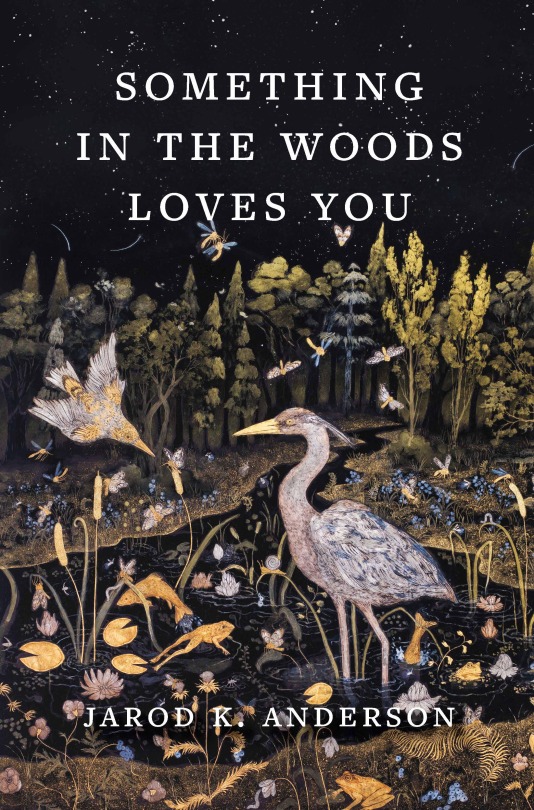
It's finally time! I've been excited to post about this FOREVER. Here is the cover for my new memoir about loving nature and struggling with depression. I'm very proud of this book and I adore this cover.
Artist: Tuesday Riddell
(Visit the link in my bio for more info.)
#nature#naturalist#nature poetry#mental health#hopepunk#poetsandwriters#depression#memoir#non fiction#new books#cover art#cover reveal
1K notes
·
View notes
Photo
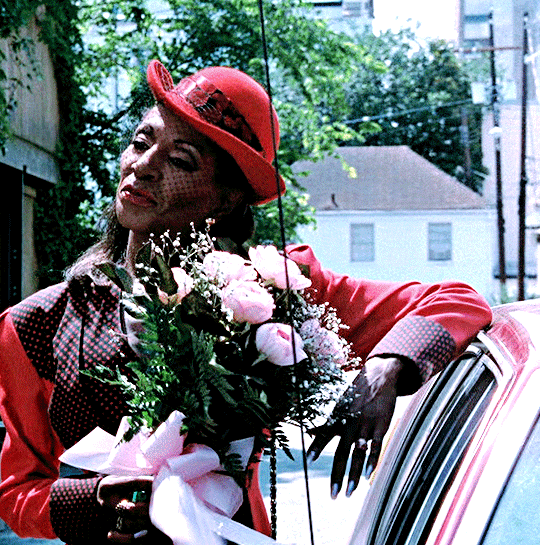
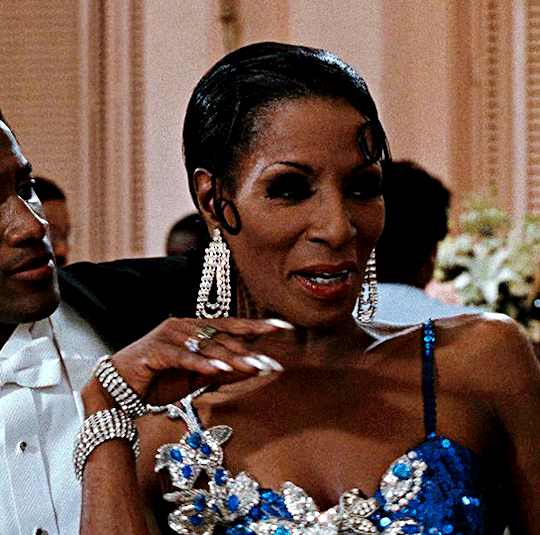

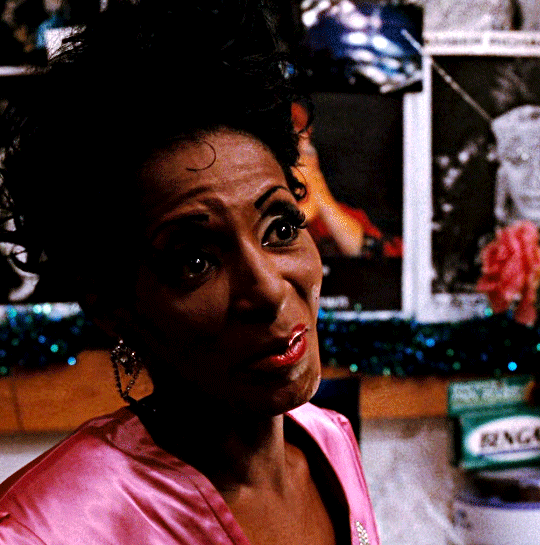

THE LADY CHABLIS starring as Herself in MIDNIGHT IN THE GARDEN OF GOOD AND EVIL (1997) Dir. Clint Eastwood
#filmedit#filmgifs#movieedit#moviegifs#filmtvedit#dailyflicks#midnight in the garden of good and evil#the lady chablis#the movie is ok but i can't recommend the book enough it's so wild that i really couldn't believe it was non fiction#but she's the best part in both
754 notes
·
View notes
Text

"All images are therefore meaningful and hold significance in some way. But tattooed images, which are acquired slowly and painfully, and which permanently change the bodies of the people who wear them, are perhaps the most meaningful and the most significant of all. As a form of image-making, tattooing seems to get closer to both inner and communal lives than any other." — Painted People, Matt Lodder
#LOVE this one#studyblr#studygram#studyspo#books#book#bookblr#booklr#reading#currently reading#tattoo#tattooing#tt#art history#art#artblr#anthropology#lit#litblr#non fiction#nonfiction#nonfic#non-fiction#essays#essayism#books and reading#inspiration
157 notes
·
View notes
Text
Let’s Go Lesbians! 32 Books for Lesbian Visibility Day
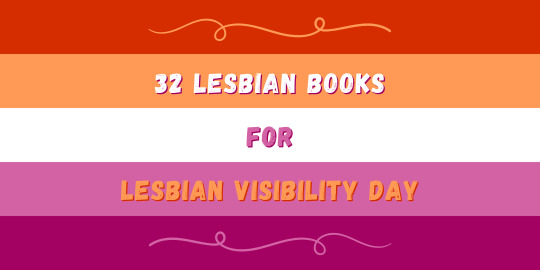
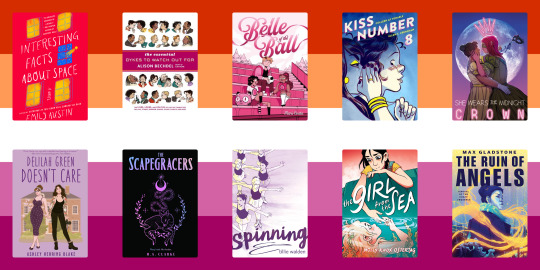

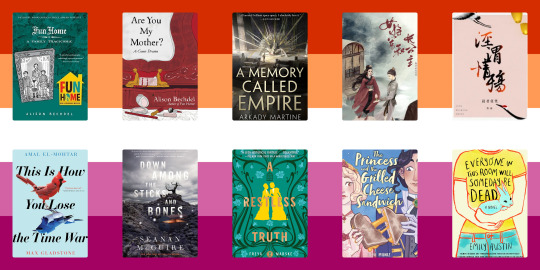
TODAY! is Lesbian Visibility Day, the first day of Lesbian Visibility Week – April 26, 2024. We are, I’m sure you’re shocked to discover, celebrating with LOTS of lesbian books! 15 people contributed to making this list, all of us sharing our absolute faves, from graphic novels to epic novels, from memoirs to horror fiction, with explicit rep and implied. With this many awesome books to share, we’re prepared to guarantee that everyone who loves wlw lit can find something new to them on this amazing list!
Interesting Facts About Space by Emily Austin
The Essential Dykes to Watch Out For by Alison Bechdel
Belle of the Ball by Mari Costa
Kiss Number 8 by Colleen AF Venable & Ellen T. Crenshaw
She Wears the Midnight Crown Anthology
Delilah Green Doesn’t Care by Ashley Herring Blake
The Scapegracers & The Scratch Daughters by H.A. Clarke
Spinning by Tillie Walden
The Girl from the Sea by Molly Knox Ostertag
The Ruin of Angels by Max Gladstone
The Traitor Baru Cormorant by Seth Dickinson
The Red Scholar’s Wake by Aliette de Bodard
Siren Queen by Nghi Vo
She Gets the Girl by Rachael Lippincott & Alyson Derrick
Camp Damascus by Chuck Tingle
One Last Stop by Casey McQuiston
Those Who Wait by Haley Cass
Harrow the Ninth by Tamsyn Muir
Legends & Lattes by Travis Baldree
Into the Bloodred Woods by Martha Brockenbrough
From Here by Luma Mufleh
Alice Isn’t Dead by Joseph Fink
Fun Home: A Family Tragicomic by Alison Bechdel
Are You My Mother? A Comic Drama by Alison Bechdel
A Memory Called Empire & A Desolation Called Peace by Arkady Martine
Female General, Eldest Princess by Please Don’t Laugh
Clear And Muddy Loss of Love by Please Don’t Laugh
This Is How You Lose the Time War by Max Gladstone & Amal El-Mohtar
Down Among the Sticks and Bones by Seanan McGuire
A Restless Truth by Freya Marske
The Princess and the Grilled Cheese Sandwich by Deya Muniz
Everyone in This Room Will Someday Be Dead by Emily Austin
Can’t get enough books with lesbians? Yeah, us neither – this new list for 2024 is on top of THREE rec lists of titles featuring lesbians that we posted last year.
Lesbian Visibility Week Recs Part 1
Lesbian Visibility Week Recs Part 2
Duck Prints Press Short Stories with Lesbian Characters
You can also view this list (along with all our other wlw faves!) as a shelf on Goodreads!
See a book you want to buy? You can grab it through the Duck Prints Press Bookshop.org affiliate shop!
What are YOUR favorite reads with lesbian characters?
#duck prints press#wlw characters#lesbian characters#queer books#queer fiction#queer non-fiction#lesbian visibility day#lesbian visibility week
346 notes
·
View notes
Text

#freedom in a rocking boat#geoffrey vickers#paperback#1970s#non fiction#pelican books#vintage#graphic design#sociology#society
184 notes
·
View notes
Text

#polls#book: i'm glad my mom died#author: jeannette mccurdy#genre: non fiction#genre: memoir#year: 2020s
486 notes
·
View notes
Text



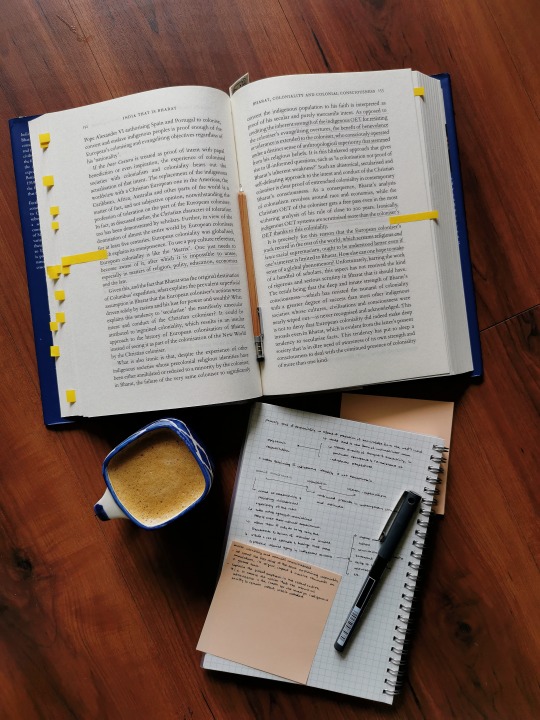
"after all, how can one feel the loss of a thing whose existence one has become unconscious to?"
a wonderful collection of essential and constant truth bombs.
#india that is bharat#j. sai deepak#indian literature#indian history#non fiction#decolonisation#indigineous people#indigenous faith#coloniality and nature#indian academia#booklr#studyblr#notes#long reads#coffee#dark academia#light academia#desiblr#study blog#book photography#vsco
1K notes
·
View notes
Text
Why are books called "fiction" and "non fiction"? Thats like "these are fake stories and these are not fake stories" like why not like "fiction" and "FACTion"???
321 notes
·
View notes
Text
Never underestimate the power of a good mediocre piece of fiction.
It's not deep. It's not mind-blowing. It's not going to blow you away with its layered character arcs and intricate themes. It's just a story that's just well-constructed enough that you're not going to be distracted by major flaws, and it's pleasant and relaxing and doesn't demand too much of you.
Those kind of stories are a vital part of any interior landscape.
#random thought of the day#books#anyway i just found a streaming '90s hallmark series that seems like it'll fit this niche perfectly#the entire first episode most of my thoughts were just what i said in this post#also to some extent kate stradling's books fill this niche for me#and to be clear in this instance mediocre is not an insult#it just means 'decently constructed non-demanding fiction that is beloved for that reason'
303 notes
·
View notes
Text

Once again thinking about Poe being able to bring parts of his ability to life, in very limited ways ofc otherwise he’d be too op lets be real
Like you back the man into corner and he sets you on fire, you die but then all the burns go away like it wasn’t ever real. It felt real. But you’re alive and now you know what it is like to die
A bit of cheeky horror 👁️👁️
#bungou stray dogs#bungo stray dogs fanart#bungou stray dogs poe#edgar allen poe#edgar allan poe#edgar allen poe bsd#bsd edgar allan poe#bsd poe#poe bsd#digital doodles#digital sketch#this is messy af but that’s okay#twas just an idea#and also idk how to draw fire lets be real#anyway there’s an inherent horror in Poe’s ability being fiction#by definition “not real”#to have his enemies deaths feel to so real and awful but as long as someone escapes the book you live in the non-fiction world again#🫡 kinda loving him#(obviously)
82 notes
·
View notes
Text

New book announcement!!
I have the pleasure of illustrating the New York Times obituaries desk's Too Big for History: 10 overlooked icons. My first non-fiction book coming in 2026 and published by Crown/PRH.
#kidlitart#book illustration#childrens books#art#artists on tumblr#YESSSS I LOVE ME SOME NON-FICTION#when I was growing up there were not enough non-fiction picture books
138 notes
·
View notes
Text
Arthurian non fiction recommendation list
I don't talk much about non fiction arthuriana because I usually don't read much of it but I have an immense love for some specific arthurian non fiction books.
I am not really interested in historical Arthur, but I love to see the evolution and addition of arthurian elements in literautre through time and space. For this reason, my absolute favorite is the series "The Arthur of the..."
Here are some:
Arthur of the Welsh (the one I always take with me! It has information of the triads, early Welsh texts and poems, Culhwch and Olwen and the Mabinogion arthurian texts)
Arthur of the French (in particular has a section about Arthur in modern French movies and fiction!)
Arthur of the Italians (this I did not check as I read the texts in Italian, but I know it has information on the Rustichello da Pisa text, the Tavola Ritonda and i Cantari, the ones with Gaia as a character)
Arthur of the Low Countries (one of my favorite because it has full summaries of some Dutch texts that are impossible to find in English like Walewein, Moriaen, Walewein ende Keye, Roel Zemel)
Arthur of the North (has some summaries of some really hard to find stuff arthurian like Ívens saga, Erex saga, Parcevals saga, various Nordic ballads, Hærra Ivan Leons riddare)
Arthur of the Germans (another good one! It has info on a bunch of German texts that are hard to find like Wigamur, various fragments, Tristan traditions)
Arthur of Medieval Latin literature (for the older stuff, like Geoffrey of Monmouth, Nennius and Life of Saints)
Arthur of the English (if you are really into Malory)
Arthur of the Iberians (I have not fully delved into this, but the chapters seem to be about the reception of arthurian matter in Spain and Portugal)
Basically, different authors tackle the arthurian traditions (more or less obscure) from different areas and time periods.
In general, if you like Welsh arthuriana anything written by Rachel Bromwich will be your friend, especially "Trioedd Ynys Prydein: The Triads of the Island of Britain".
For general information:
The Arthurian Name Dictionary (Bruce) - this used to be online, not anymore, but you can still access it through the archive here
The Arthurian companion (Phyllis Ann Karr)
The Oxford Guide to Arthurian Literature and Legend (Alan Lupack)
The Arthurian Encyclopedia (Lacy)
The Illustrated Encyclopaedia of Arthurian Legends (Coghlan)
If you are looking for more translated texts you can check here for free downloads, but if you would like books, here are some:
The Romance of Arthur: An Anthology of Medieval Texts in Translation (Wilhelm)
This book contains translations of:
Culhwch and Olwen Roman de Brut Brut Some Chretien de Troyes Some Parzival excerpts The saga of the mantle Beroul's Romance of Tristan Thomas of Britain's Romance of Tristan Lanval The Honeysuckle Cantare on the Death of Tristan Suite du Merlin Prose Merlin Sir Gawain and the Green Knight The Wedding of Sir Gawain and Dame Ragnelle De ortu Waluuanii nepotis Arthuri
The Book of Arthur: Lost Tales From the Round Table (Matthews John)
This book contains translations of:
(Celtic Tales) The Life of Merlin The Madness of Tristan The Adventures of the Eagle Boy The Adventures of Melora and Orlando The Story of the Crop-eared dog Visit of the Grey Ham The Story of Lanval
(Tales of Gawain) The rise of Gawain Gawain and the Carl of Carlisle The Wedding of Sir Gawain and Dame Ragnelle The adventures of Tarn Wathelyn The Mule without a bridle The knight of the Sword Gorlagros and Gawain
(Medieval texts) The knight of the parrot The vows of King Arthur and his Knights The fair unknown Arthur and Gorlagon Guingamor and Guerrehes The story of Meriadoc The story of Grisandole The Story of Perceval Sir Cleges The Boy and the Mantle The lay of Tyolet Jaufre The story of Lanzalet And some final notes
#lancelot#arthurian legend#camelot#king arthur#recs#arthurian non fiction#essays#non fiction#arthur of the#favs#rec#books#resources#resource
70 notes
·
View notes
Text
Disability in Non-Fiction #1: Plain Text Edition
A plain text version of this post. Here you will find detailed image descriptions and easier-to-read versions of each book summary. If you think that any image descriptions/summaries need to be updated, please let me know!
================================================
‘How to Live Free in a Dangerous World’- Lawson, Shayla

[ID: A book cover. The background is a pale orange colour. In the centre, a large photograph of a person with brown skin standing in front a desert under a blue sky. They have short braided brown hair swept over their left eye, and have their arms crossed over their chest, with one hand resting on the side of their face. The title “How to Live Free in a Dangerous World” is around them in large orange writing that covers the length of the photo. The subtitle “A Decolonial Memoir” is to the right their head in very small white writing. The author’s name “Shayla Lawson” is below the title, at the bottom of the photograph, in smaller yellow writing. Black text at the bottom of the cover reads, under the author’s name, reads “author of ‘this is major’, a national book critics circle award finalist”. /end]
Summary:
Poet and journalist Shayla Lawson follows their National Book Critics Circle finalist This Is Major with these daring and exquisitely crafted essays, where Lawson journeys across the globe, finds beauty in tumultuous times, and powerfully disrupts the constraints of race, gender, and disability.
With their signature prose, at turns bold, muscular, and luminous, Shayla Lawson travels the world to explore deeper meanings held within love, time, and the self.
Through encounters with a gorgeous gondolier in Venice, an ex-husband in the Netherlands, and a lost love on New Year’s Eve in Mexico City, Lawson’s travels bring unexpected wisdom about life in and out of love. They learn the strength of friendships and the dangers of beauty during a narrow escape in Egypt. They examine Blackness in post-dictatorship Zimbabwe, then take us on a secretive tour of Black freedom movements in Portugal.
Through a deeply insightful journey, Lawson leads readers from a castle in France to a hula hoop competition in Jamaica to a traditional theater in Tokyo to a Prince concert in Minnesota and, finally, to finding liberation on a beach in Bermuda, exploring each location—and their deepest emotions—to the fullest. In the end, they discover how the trials of marriage, grief, and missed connections can lead to self-transformation and unimagined new freedoms.
‘Being Seen’- Sjunneson, Elsa

[ID: A book cover. It is a dark black with faint, grey, writing over it. The writing, from top to bottom, reads: “Elsa Sjunneson” “Being Seen” “One Deafblind Woman’s Fight to End Ableism” All in capitals. The “I” in “Being Seen” is designed to look like an opening of sorts, with a ray of light coming through. /end]
Summary:
A deafblind writer and professor explores how the misrepresentation of disability in books, movies, and TV harms both the disabled community and everyone else.
As a deafblind woman with partial vision in one eye and bilateral hearing aids, Elsa Sjunneson lives at the crossroads of blindness and sight, hearing and deafness—much to the confusion of the world around her. While she cannot see well enough to operate without a guide dog or cane, she can see enough to know when someone is reacting to the visible signs of her blindness and can hear when they’re whispering behind her back. And she certainly knows how wrong our one-size-fits-all definitions of disability can be.
As a media studies professor, she’s also seen the full range of blind and deaf portrayals on film, and here she deconstructs their impact, following common tropes through horror, romance, and everything in between. Part memoir, part cultural criticism, part history of the deafblind experience, Being Seen explores how our cultural concept of disability is more myth than fact, and the damage it does to us all.
‘Disability Pride’- Mattlin, Ben

[ID: A book cover. The background is made of simple, colourful red, cream, white, yellow and teal shapes. Large text reads, from top to bottom: “Disability Pride” in large, black capitals, “Dispatches from a Post-ADA World”in smaller, black capitals, “Ben Mattlin”, in slightly bigger red capitals. /end]
Summary:
An eye-opening portrait of the diverse disability community as it is today and how attitudes, activism, and representation have evolved since the passage of the Americans with Disabilities Act (ADA).
In Disability Pride, disabled journalist Ben Mattlin weaves together interviews and reportage to introduce a cavalcade of individuals, ideas, and events in engaging, fast-paced prose. He traces the generation that came of age after the ADA reshaped America, and how it is influencing the future. He documents how autistic self-advocacy and the neurodiversity movement upended views of those whose brains work differently. He lifts the veil on a thriving disability culture—from social media to high fashion, Hollywood to Broadway—showing how the politics of beauty for those with marginalized body types and facial features is sparking widespread change.
He also explores the movement’s shortcomings, particularly the erasure of nonwhite and LGBTQIA+ people that helped give rise to Disability Justice. He delves into systemic ableism in health care, the right-to-die movement, institutionalization, and the scourge of subminimum-wage labor that some call legalized slavery. And he finds glimmers of hope in how disabled people never give up their fight for parity and fair play.
Beautifully written, without anger or pity, Disability Pride is a revealing account of an often misunderstood movement and identity, an inclusive reexamination of society’s treatment of those it deems different.
‘Crip Kinship’- Kafai, Shayda

[ID: A book cover. The background is light blue, with colourful pictures of butterflies, flowers and a house setting featured in the centre. Lower right centre of the image, a black figure in a long sleeved, billowing dress, holding a curved black walking stick in their right hand. Behind them, a drawing of a room with a table, chair, pink wall with a window, and a blank wall with an orange picture. Text on the book cover, from top to bottom, reads: The title “Crip Kinship” in large black font at the top of the image, The subtitle “The Disability Justice & Art Activism of Sins Invalid” in smaller black capitals, in the upper right corner of the image, The authors name “Shayda Kafai” in medium black capitals in the lower right of the image, partially overlapping the figure in the dress. /end]
Summary:
The remarkable story of Sins Invalid, a performance project that centres queer disability justice.
In recent years, disability activism has come into its own as a vital and necessary means to acknowledge the power and resilience of the disabled community, and to call out ableist culture wherever it appears.
Crip Kinship explores the art activism of Sins Invalid, a San Francisco Bay Area-based performance project, and its radical imaginings of what disabled, queer, trans, and gender-nonconforming bodyminds of colour can do: how they can rewrite oppression, and how they can gift us with transformational lessons for our collective survival.
Grounded in the disability justice framework, Crip Kinship investigates the revolutionary survival teachings that disabled, queer of colour community offers to all our bodyminds. From their focus on crip beauty and sexuality to manifesting digital kinship networks and crip-centric liberated zones, Sins Invalid empowers and moves us toward generating our collective liberation from our bodyminds outward.
‘Sounds Like Home’- Wright, Mary Herring

[ID: A book cover. The background is yellow. A black and white photograph in the centre shows two young black children and a dog in front of a car. The title “Sounds Like Home” is at the tope in large, curvy black writing. The subtitle “Growing Up Black and Deaf in the South” is written in small orange writing, on three black bars on the right side of the cover. The author’s name “Mary Herring Wright” is written in curvy black writing, slightly smaller than the title, at the bottom of the cover. /end]
Summary:
Mary Herring Wright’s memoir adds an important dimension to the current literature in that it is a story by and about an African American deaf child. The author recounts her experiences growing up as a deaf person in Iron Mine, North Carolina, from the 1920s through the 1940s. Her story is unique and historically significant because it provides valuable descriptive information about the faculty and staff of the North Carolina school for Black deaf and blind students from the perspective of a student as well as a student teacher. In addition, this engrossing narrative contains details about the curriculum, which included a week-long Black History celebration where students learned about important Blacks such as Madame Walker, Paul Laurence Dunbar, and George Washington Carver. It also describes the physical facilities as well as the changes in those facilities over the years. In addition, Sounds Like Home occurs over a period of time that covers two major events in American history, the Depression and World War II.
Wright’s account is one of enduring faith, perseverance, and optimism. Her keen observations will serve as a source of inspiration for others who are challenged in their own ways by life’s obstacles.
‘The Right to Maim’- Puar, Jasbir K.
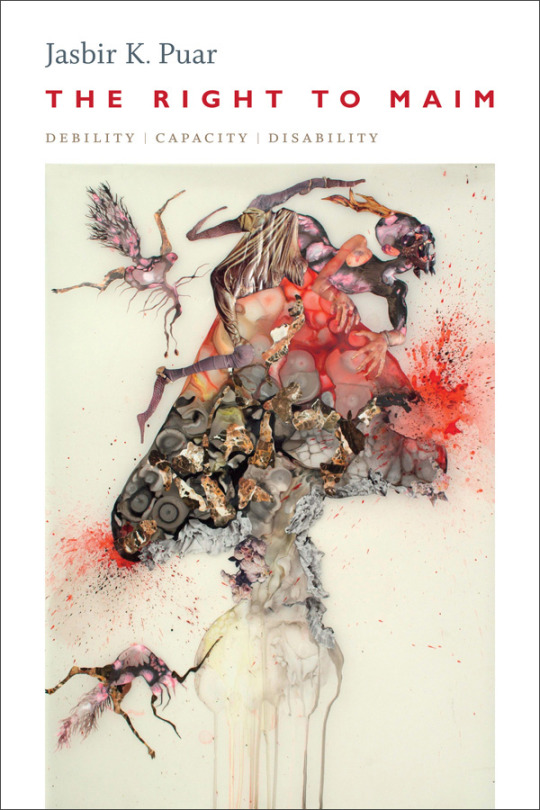
[ID: A book cover. The background is white. A painting stretches from the bottom of the cover to bottom of top quarter. In the upper quarter of the cover, text reads: The author’s name “Jasbir K. Puar” is at the top in black writing. The title “The Right to Maim” is immediately below this in red caps. The subtitle “Debility, Capacity, Disability” is immediately below this in smaller, yellow caps. The painting is immediately below this. The background is a dark cream. It appears to show a humanoid figure climbing a mound. Two other figures appear to be falling off the mound. There are splashes of red paint around the mound and the figure on it. /end]
Summary:
In The Right to Maim Jasbir K. Puar brings her pathbreaking work on the liberal state, sexuality, and biopolitics to bear on our understanding of disability. Drawing on a stunning array of theoretical and methodological frameworks, Puar uses the concept of “debility”—bodily injury and social exclusion brought on by economic and political factors—to disrupt the category of disability. She shows how debility, disability, and capacity together constitute an assemblage that states use to control populations. Puar’s analysis culminates in an interrogation of Israel’s policies toward Palestine, in which she outlines how Israel brings Palestinians into biopolitical being by designating them available for injury. Supplementing its right to kill with what Puar calls the right to maim, the Israeli state relies on liberal frameworks of disability to obscure and enable the mass debilitation of Palestinian bodies. Tracing disability’s interaction with debility and capacity, Puar offers a brilliant rethinking of Foucauldian biopolitics while showing how disability functions at the intersection of imperialism and racialized capital.
‘Uncomfortable Labels’- Dale, Laura Kate

[ID: A book cover. The background is a close photograph of some kind of knitted garment, and its label. The garment is blue. The label is in the centre. Text on the label reads: The title “Uncomfortable Labels” in large black caps The subtitle “My Life as a Gay Autistic Trans Woman” in smaller black caps, lower left of this The author’s name “Laura Kate Dale” at the bottom of the label in black writing. A smaller label attached to the bottom has a single, black capitalised “M” written on it. /end]
Summary:
“So while the assumption when I was born was that I was or would grow up to be a neurotypical heterosexual boy, that whole idea didn’t really pan out long term.”
In this candid, first-of-its-kind memoir, Laura Kate Dale recounts what life is like growing up as a gay trans woman on the autism spectrum. From struggling with sensory processing, managing socially demanding situations and learning social cues and feminine presentation, through to coming out as trans during an autistic meltdown, Laura draws on her personal experiences from life prior to transition and diagnosis, and moving on to the years of self-discovery, to give a unique insight into the nuances of sexuality, gender and autism, and how they intersect.
Charting the ups and downs of being autistic and on the LGBT spectrum with searing honesty and humour, this is an empowering, life-affirming read for anyone who’s felt they don’t fit in.
'Brilliant Imperfections'- Clare, Eli

[ID: A book cover. A photograph of stones can be seen. Over it, a dark box stretching from left to right at the top of the image. Text in the box reads: “Brilliant Imperfection”, in large caps. “Brilliant” is in green, “Imperfection is in white. “Grappling With Cure”, in small, green caps. “Eli Clare”, in white caps. /end]
Summary:
In Brilliant Imperfection Eli Clare uses memoir, history, and critical analysis to explore cure—the deeply held belief that body-minds considered broken need to be fixed.
Cure serves many purposes. It saves lives, manipulates lives, and prioritizes some lives over others. It provides comfort, makes profits, justifies violence, and promises resolution to body-mind loss. Clare grapples with this knot of contradictions, maintaining that neither an anti-cure politics nor a pro-cure worldview can account for the messy, complex relationships we have with our body-minds.
The stories he tells range widely, stretching from disability stereotypes to weight loss surgery, gender transition to skin lightening creams. At each turn, Clare weaves race, disability, sexuality, class, and gender together, insisting on the nonnegotiable value of body-mind difference. Into this mix, he adds environmental politics, thinking about ecosystem loss and restoration as a way of delving more deeply into cure.
Ultimately Brilliant Imperfection reveals cure to be an ideology grounded in the twin notions of normal and natural, slippery and powerful, necessary and damaging all at the same time.
================================================
A short list of 8 non-fiction books featuring and/or discussing disability!
I don't highlight the non-fiction section of the archive enough, so I think this is a perfect opportunity.
A plain text version of this post exists here, featuring more detailed image descriptions of each book cover and easier-to-read versions of every summary.
Books on this list:
‘How to Live Free in a Dangerous World’- Lawson, Shayla
‘Being Seen’- Sjunneson, Elsa
‘Disability Pride’- Mattlin, Ben
‘Crip Kinship’- Kafai, Shayda
‘Sounds Like Home’- Wright, Mary Herring
‘The Right to Maim’- Puar, Jasbir K.
‘Uncomfortable Labels’- Dale, Laura Kate
'Brilliant Imperfections'- Clare, Eli
All of these books and more can be found on the Disability Book Archive.
Happy Disability Pride Month!
#books#disability books#disability#disability representation#the disability book archive#lgbtq books#lgbtq+#lgbtq representation#non fiction#disability pride month#disability pride#disability history#link#images#described#alt text#plain text#disability in non fiction#part 1
89 notes
·
View notes
Text
That book "The Revolutionary Career of Maximilien Robespierre" by David P. Jordan continues to amaze me. Here are more extracts...
As Robespierre lay on a table in the antechamber of the Commitee of Public Safety, drifting in and out of consciousness, his ball-shattered jaw bound up with a bandage, his triumphant enemies, in another room of the Tuileries palace, were creating the monster who would soon pass into historical legend. This Robespierre created by using materials scavenged from old calumny, damaging anecdote, and sometimes sheer malicious invention, was one of the founding acts of a new revolutionary government...
---
This is how the first chapter started, followed by examples of this awful propaganda and slander, which I refuse to repeat here. *sigh*
Anyway, some interesting facts are brought up here.
In making Robespierre the monstrous symbol of the Terror, of all fanaticism and excess, they not only created a vile legend, which was politically useful at the moment, they also recognized, in their frantic efforts to exorcise Robespierre's disturbing shade, his significance. In a sense Thermidorian vituperation kept Robespierre alive. The very intensity of their malice tended to mythologize the man they sought to obliterate. The next generation, with different purposes and sensibilities, would take up the memory of Robespierre, still warm from the passion of Thermidorian hatred, and create a heroic figure, a savior of France and a champion of humankind. Monster and hero have remained the poles of Robespierre's changing reputation...
...The legend of a monstrous Robespierre not only grew unchecked, for when it was being made none dared challenge the new masters of the Revolution, but was reiterated and embellished by government apologists and men who found the legend useful for propaganda, a reminder of the revolutionary excesses from which they insisted they had saved France. Napoleon, whose coup d'état in 1799 ended the reign of the Thermidorians, as First Consul or later as Emperor, had no desire to remind the people of his brief but real robespierriste past. He had no intention of rehabilitating Robespierre's reputation, let alone connecting himself with the Terror....
Charlotte's Mémoires were then...the belated and necessary antidote for Thermidorian poison. (I love the author's language.)
Although she saw only the lovable brother, while... He never aspired to be loved for his personality (as Charlotte loved him). He demanded, and received, respect, devotion, even love - for he had several close friends who resembled and extended family - for what he insisted he was, a revolutionary.
#french revolution#robespierre#books and reading#I love this book already#I have never cried so much while reading a non-fiction book#thermidor#frev#maximilien robespierre
57 notes
·
View notes
Text

114 notes
·
View notes